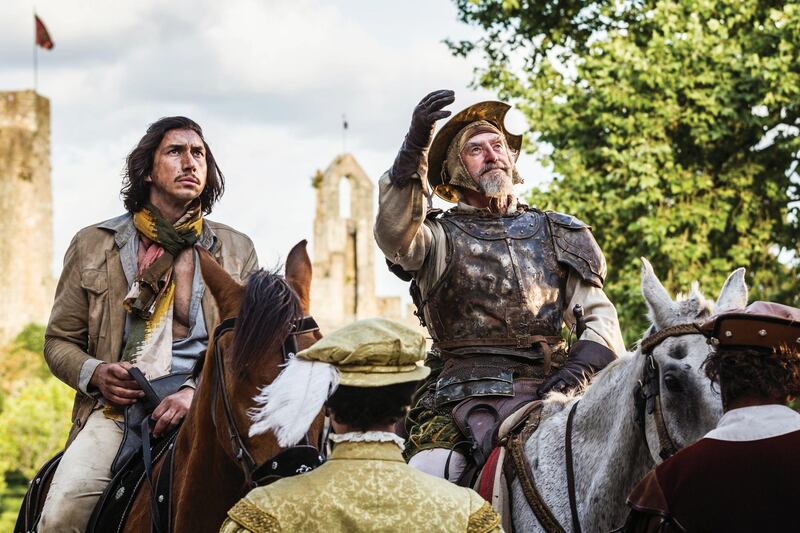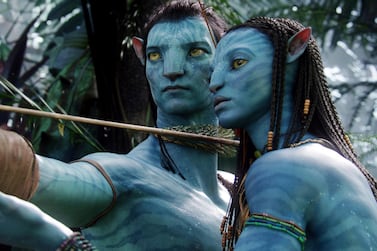With the recent announcement that James Cameron's Avatar 2 has had its December 2020 release date pushed back to 2021, we were curious to know just how many other films had kept audiences waiting such a monumental period of time. Needless to say, Avatar and its many sequels are not the worst offenders.
Indeed, compared with the 48 years we waited to see Orson Welles' final film The Other Side of the Wind, or the 29 years it took Terry Gilliam to finally release The Man Who Killed Don Quixote, the 12 years we look likely to wait for Cameron's sequel begins to look like a mere blink of the eye.
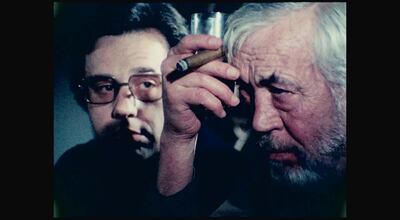
1. 'The Other Side of the Wind'
Went into development: 1970
Original release date: 1972
Actual release date: 2018
Total wait: 48 years
Orson Welles’ infamous final film was a deeply personal project, a mockumentary that chronicled the efforts of an aging Hollywood director attempting to revive his career with one final experimental masterpiece. Welles began working on the project in 1970 and continued working intermittently on the film until 1985 when, like the subject of the film, he died without completing his swansong, which was mired in legal, financial and political complications.
In 2014, the rights were acquired by Royal Road and the film’s co-star Peter Bogdanavic took charge of reconstructing the footage, leading to an eventual premiere at Venice in 2018, followed by a global release on Netflix.
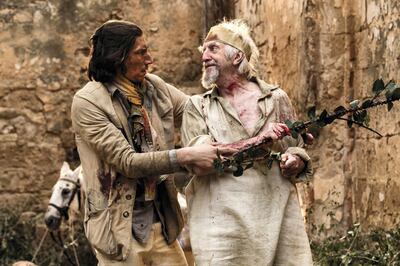
2. 'The Man Who Killed Don Quixote'
Went into development:1989
Original release date: NA
Released: 2018
Total wait: 29 years
Terry Gilliam’s much-troubled movie about a director struggling to make a film featuring Don Quixote and Sancho Panza, coupled with Orson Welles’ struggles above, could perhaps be held up as a direct warning to directors not to make films about directors struggling to make films.
Gilliam initially began making his movie in 1989, but it took him until 1998 to raise sufficient funds to go into full production. The next couple of decades would see production held up by illness, flooding, insurance issues and more financial trouble, with a succession of actors including Johnny Depp, Ewan McGregor and Jack O’Connell all filling the lead role at various points.
Following one of the film's frequent cancellations in 2002, a "non-making of documentary," Lost in La Mancha, was even released from footage taken on set, to great critical acclaim. Gilliam had vowed to document all of his shoots in case of cancellation following 1988's The Adventures of Baron Munchausen almost being pulled mud-shoot.
In March 2017, with the film all but forgotten, Gilliam unexpectedly announced that it had started shooting again, with Adam Driver as leading man. The film finally premiered at Cannes in May 2018, though not without a lengthy legal battle with a former producer that put the screening in doubt right up until the last minute. Tying up loose ends nicely, at the same event the directors of Lost in La Mancha announced that they would be making a follow up documentary chronicling the entire 29-year gestation, with particular focus on post-La Mancha events.
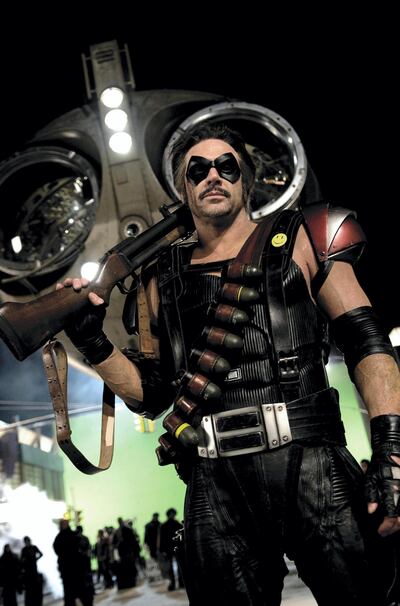
3. 'Watchmen'
Went into development: 1986
Original release date: NA
Actual released date: February 2009
Total wait: 23 years
Zack Snyder’s adaptation of Alan Moore’s classic graphic novel had been on a veritable development merry-go-round by the time Snyder’s version made it to cinemas in 2009. The rights were picked up by Fox in 1986. But they were then passed on to Warners’, then to Universal, to Paramount, and finally back to Warners’, via a final legal challenge from Fox to block the film’s release.
Directors including Terry Gilliam (who declared the graphic novel unfilmable), Darren Aranofsky and Michael Bay were variously attached before Snyder finally completed the job. Moore, who has a famously fractious relationship with Hollywood, refused to attach his name to the film version and says he hasn’t seen it, though he did concede that David Hayter’s screenplay was “as close” as he could imagine him getting.
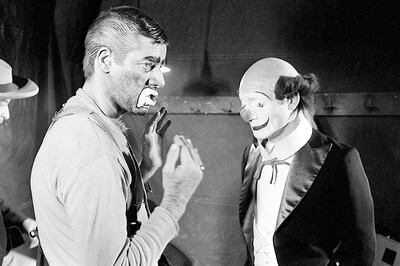
4. 'The Day the Clown Cried'
Went into production: 1971
Original release date: 1973
Actual release date: Unreleased
Total wait: ?
Exactly what was on comedian Jerry Lewis’s mind when he decided to direct and star in a film about a washed up German circus clown who is imprisoned for mocking Hitler (who then finds a new lease of life performing for Jewish children in prison and is ultimately employed, Pied Piper style, to lead them onto the boxcar train to Auschwitz and into the “showers” to face certain death) is not clear.
What is clear is that at some point between somehow thinking this was a good idea and actually completing the film out of his own pocket, ready for its premiere at 1973’s Cannes Film Festival, when the producers ran out of money, he changed his mind. The film did not premiere, and was never released, and Lewis has said it never will.
As recently as 2013, Lewis told reporters at Cannes: "It was bad work. You'll never see it and neither will anyone else." There are rumours, however, that in 2015, while approaching his 90th birthday and following prolonged bouts of ill health, Lewis donated a print of the film to the Library of Congress under the stipulation that it would not be screened until at least 2024. Lewis died in 2017.
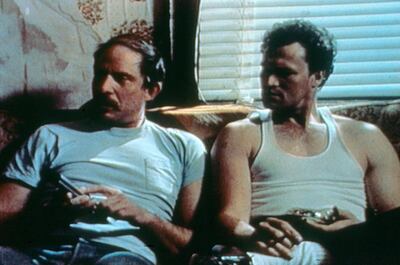
5. 'Henry: Portrait of a Serial Killer'
Went into production: 1984
Original release date: 1986
Actual release date: 1989
Total wait: Five years
John McNaughton’s gruesome depiction of a pair of serial killers, inspired by the real-life story of Henry Lee Lucas and Ottis Toole, bizarrely started life as a documentary about wrestling in Chicago in the thirties.
However, once the film’s producers had raised $110,000 in funding, the owner of the vintage tapes the documentary was to be based on doubled his price. Left with funding and a director in place and no more film, the producers switched tack and decided to make a low-budget horror.
McNaughton knew his budget wouldn’t stretch to aliens or monsters, so he opted for a highly personal study of two truly deranged human beings, shot on 16mm over 28 days, and with most of the cast made up of friends, family or spare crew members. The film was never intended to receive a theatrical release, but after critical success on its festival run over 1987 and 1988, and a growing profile due to censorship disputes with various countries’ classification boards – always sure to guarantee an audience – it received a limited release in 1989, handsomely covering its low production costs, and went on to be a cult classic on DVD, with new cuts released every few years as various countries softened their censorship stance, allowing more footage to be returned to the film.
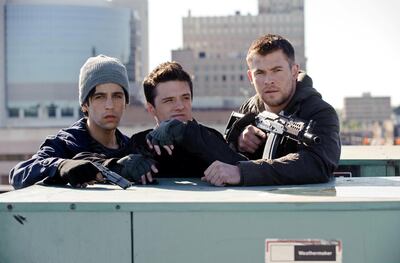
6. 'Red Dawn'
Went into production: 2008
Original release date: November 2010
Actual release date: November 2012
Total wait: Four years
MGM announced they were remaking the 1984, gung-ho actioner at Cannes in 2008, but were swapping out the Russian enemy with a Chinese one – since Russia had now joined the capitalist club. Release was scheduled for 2010.
By late 2010, however, MGM was in serious financial difficulty, and the release was postponed while the studio underwent Chapter 11 bankruptcy restructuring, hopefully until 2011.
Around the same time, however, Chinese media picked up on the film, and they were not pleased about the efforts to “demonise” China on screen. Worried about the likely effect on the increasingly important Chinese box office, the film was hurried back into post-production where all Chinese references, flags, symbols and dialogue were replaced by North Korean ones, a far less critical source of income. The film eventually made it out two years after its original release date. Ironically, it was never picked up by Chinese cinemas anyway.
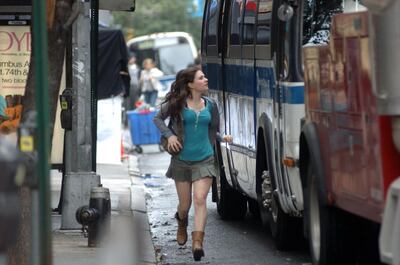
7. 'Margaret'
Went into production: 2005
Original release date: Late 2007
Actual release date: Late 2011
Total wait: Five years
Even a multi-Oscar-nominated director and an all-star cast can't keep a film out of development hell. Kenneth Lonergan was the man behind Gangs of New York and, more recently, Manchester by the Sea. His 2011 drama Margaret featured household names including X-Men and The Piano's Anna Paquin, Jean Reno, Mark Ruffalo and Matt Damon among the cast.
Shooting was finished on schedule in late 2005, then Lonergan embarked on a lengthy post-production process that, by 2009 with the film still in post-production, would spark several lawsuits that would drag on until 2014, three years after the film’s release. The studio insisted the film should not run any longer than 150-minutes, but Lonergan’s cut was closer to three hours.
A third-party private financier took matters into his own hands and delivered a cut from Brokeback Mountain's editor without the permission of either Lonergan or Fox Searchlight. Martin Scorsese, who described Lonergan's original cut as a "masterpiece" stepped in and delivered a 165-minute cut as a compromise. Eventually, with legal battles still rumbling, Lonergan's original cut received a limited release in 2011. The movie received widespread critical acclaim, but with little marketing, few screens showing the film (14 in the US, and one each in the UK and France on release) and an off-putting, overlong run time it only managed to pull back just over $600,000 at the global box office, well short of its $14m budget, and probably some way short of the accumulated legal costs too.
